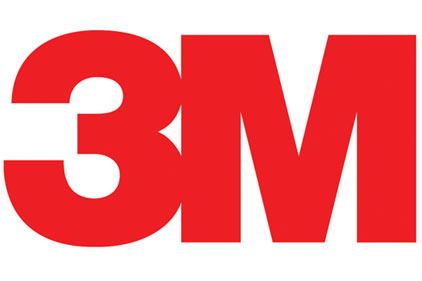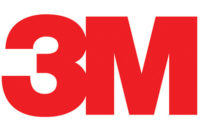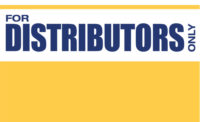What will it require to reduce excessive hearing loss in Asian countries?
In view of the long latency period of noise induced hearing loss (NIHL), early detection and intervention can prevent or minimize the progression of NIHL and also prevent other workers from being similarly exposed to the same risk.
Government intervention, such as through increasing educational awareness to identify occupational exposures, as well as government enforcement, are some key initiatives that will help address the number one occupational disease in the world. In Singapore, the Workplace Safety and Health Guide had recently been published by the Ministry of Manpower to help doctors and health professionals to better identify work-related hearing loss.
In addition, to protect potentially exposed employees from the adverse effects of noise, every workplace with noise hazards should implement a comprehensive Hearing Conservation Program (HCP), such as that required as part of Noise Regulations under the Workplace Health and Safety Act:
The objective of the HCP is to minimise the risks associated with occupational noise exposure and to prevent NIHL at the workplace. The basic elements of a HCP are to:
- Identify noise hazards and evaluate the risks to workers
- Implement noise control measures to minimize the risks
- Provide hearing protectors where noise control measures are not feasible
- Train and educate workers to raise awareness of noise hazards and on how to prevent them, including the proper use of hearing protectors
- Conduct annual audiometric examinations to monitor effectiveness of HCP and to detect hearing impairment
- Keep records to track and evaluate the effectiveness of HCP, which includes noise monitoring results, risk assessment records and audiometric examination results
3M continues to help drive the training and education segment of the HCP, so as to aid in improving the probability of success in a HCP.
What will be required to lower the incidence of occupational lung disease?
On top of wearing proper respiratory protection, training on the use of such equipment is important to ensure the full protective value of the respiratory protective device.
Achieving a proper fit is critical to ensure that airborne hazards do not enter the breathing zone through gaps and leaks due to an improper face-seal. In this respect, fit testing is an important part of a respiratory protection program and is a mandatory requirement for respirator users in Singapore. 3M has always provided fit-testing at no cost to all workers who use 3M respirators, even before the regulations were implemented.
What are some of the specific new global occupational safety and health standards that are emerging? Who is issuing them? What safety and health risks do they address? How can standards global in scope be customized for local businesses? Who enforces these standards? Or are they voluntary?
Specific new trends:
- Managing of PPE supply and demand with a vending machine
- Increasing the comfort level of PPE so that workers will use them all the time
- Advocating safety and health professionals to consider the simultaneous use of different types of PPE together
- Evaluating the PPE combined performance for workers as opposed to regulating them separately
Safety standards are going global:
Health and safety regulations are becoming increasingly stringent around the world. Some areas, including Asia and Latin America are beginning to increase their safety and health requirements to align more closely with the standards in other areas, such as the U.S. and Europe.
The current ISO PPE standards are one such attempt with multi-nation representatives, and International Standards Organization (ISO) continues to develop global safety standards for PPE.
Singapore is an observing country with respect to the new ISO global PPE standards (respiratory), which are currently in progress. As such, there has been no active participation or voting required.
Many emerging nations have occ safety and health laws that look strong on paper, but are not enforced for fear of driving business out of the country. What will it take for enforcement of safety and health laws to get stronger in these emerging countries?
As some MNCs (multinational corporations) are more willing to invest in countries where there is a strong health and safety commitment, having a good health and safety record could thus potentially attract these companies to invest in their countries. For example, some oil rig owners will only award contracts to companies who can demonstrate a strong track record in terms of workplace health and safety, as accidents are costly not only in terms of productivity and legal costs, but also a cost to reputation. Singapore has benefited from these investments partly due to its strong commitment, drive and initiative in building a strong safety and health workplace culture.
Regardless of the level of health and safety regulations in the particular country where they operate, MNCs usually bring good standards of health and safety adopted from their home country. For example in 3M, we will comply with local health and safety regulation but will not hesitate to adopt equivalent regulation where it is more stringent.
Working with MNCs on how best practices can be adopted and tailored locally is one way emerging countries can strengthen the enforcement of their health and safety laws. In Singapore, 3M works very closely with regulators to transfer the knowledge of health and safety regulations from developed countries to emerging countries, some of which had already been implemented.
It is believed by some in the U.S. that cultural differences devalue human life in Asian and African countries. There is always someone in line waiting to take your job, at a very low wage, according to this belief. And so there is little need for quality PPE and safety training. What can multinational corporations like 3M do to increase an emphasis and spending on healthy workers?
A healthy workforce is good for the business as it provides productivity gains. By increasing awareness through seminars and training, workers will understand the need to protect their health and safety at the workplace.
3M partners with the relevant government agencies in its outreach program to share its best practices to various industries. 3M’s Occupational Health and Environmental Safety Division provides safety solutions, training and consultancy services and educational awareness seminars to ensure the proper use of PPE at the workplace. An example of 3M’s contribution is the ongoing seminars and training on the proper use, care and maintenance of hearing protectors in a HCP.








